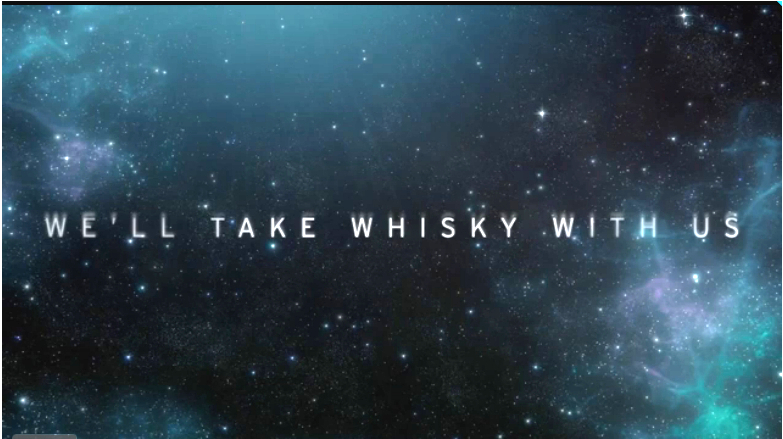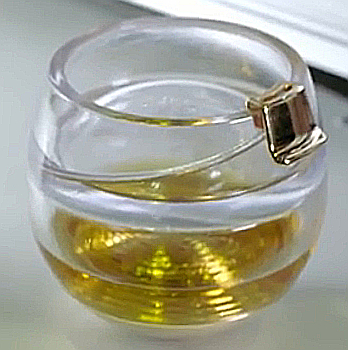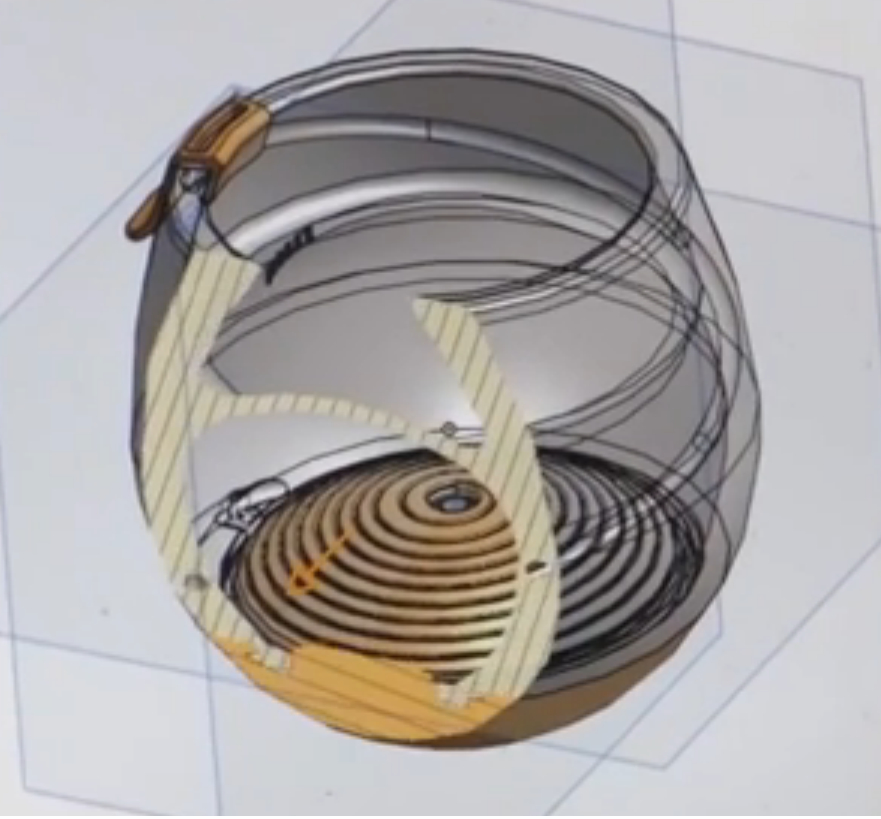
TARGET 160106
TASK: Describe the targeted object
The Ballantine Corporation has looked into the future of humanity as we venture out into space and realized one undeniable fact: as we travel into space:

But there's a problem. Astronauts presently keep liquids in pouches. You see them put on a show for us earthbound humans by squirting some water into the air, where it forms into a blob so they can suck it into their mouths from mid-air. That's all good and well for water, but for gentlemanly whisky sipping? Not at all chic and refined.
And another problem (danger: science lesson coming up here): We know what water will do in zero gravity, but what will alcohol and other liquids do? Well, the answer deals with two physical factors of all liquids:
cohesion , the tendency of a liquid's molecules to stick to each other instead of just dispursing out in all directions (which is what makes it turn into a blob), and
adhesion , the tendency of a liquid's molecules to stick to something else (as in "adhesive tape"). When you see the astronauts sucking in those blobs of water, it is in a controlled situtaion. If those blobs were left to float around, they would adhere themselves to the equipment and... that's right... water in the equipment... not a good idea.
So, Ballentine decided that this situation had to be dealt with by some good, solid research. What kind of an open whiskey glass would keep the whiskey in the glass and still allow for a refined sip now and then. Inquiring minds want to know.
THE OBJECT
For those of you who remote viewed the object in this tasking, this is the zero-G drinking glass that Ballentine finally developed:

The Zero-G whiskey glass

How it works
The glass has a uniquely designed "adhesion" surface in the bottom of the glass. That layer holds the blob of whiskey securely to the bottom of the glass. Then, there is a "straw" built into the side of the glass, leading up to a spot on the rim, allowing the drinker to suck the whiskey in from the edge of the glass, as though drinking from a glass on Earth. The clip on the end of the "straw" prevents the whiskey from venturing out into the air around the glass. It's as simple as that.
And yes, although it is an invention for brave and daring adventurers who risk the dangers of space travel and the health-hazards of living for long periods in zero-G conditions, it is also just a very high-tech sippy cup.
If you got impressions for which this feedback is insufficient, more information,
pictures and videos can be found at the following web sites:
NYTimes.com
(Shows the cup, its construction, and has a video of an astronaut drinking coffee from a makeshift plastic bag that uses adhesion to control the flow of the coffe.)
IF YOU HAVE NOT DONE THE OTHER TASKS, DO NOT WATCH THE SECOND VIDEO ON THIS PAGE. IT WILL POLLUTE YOU TO THE OTHER TASKS.